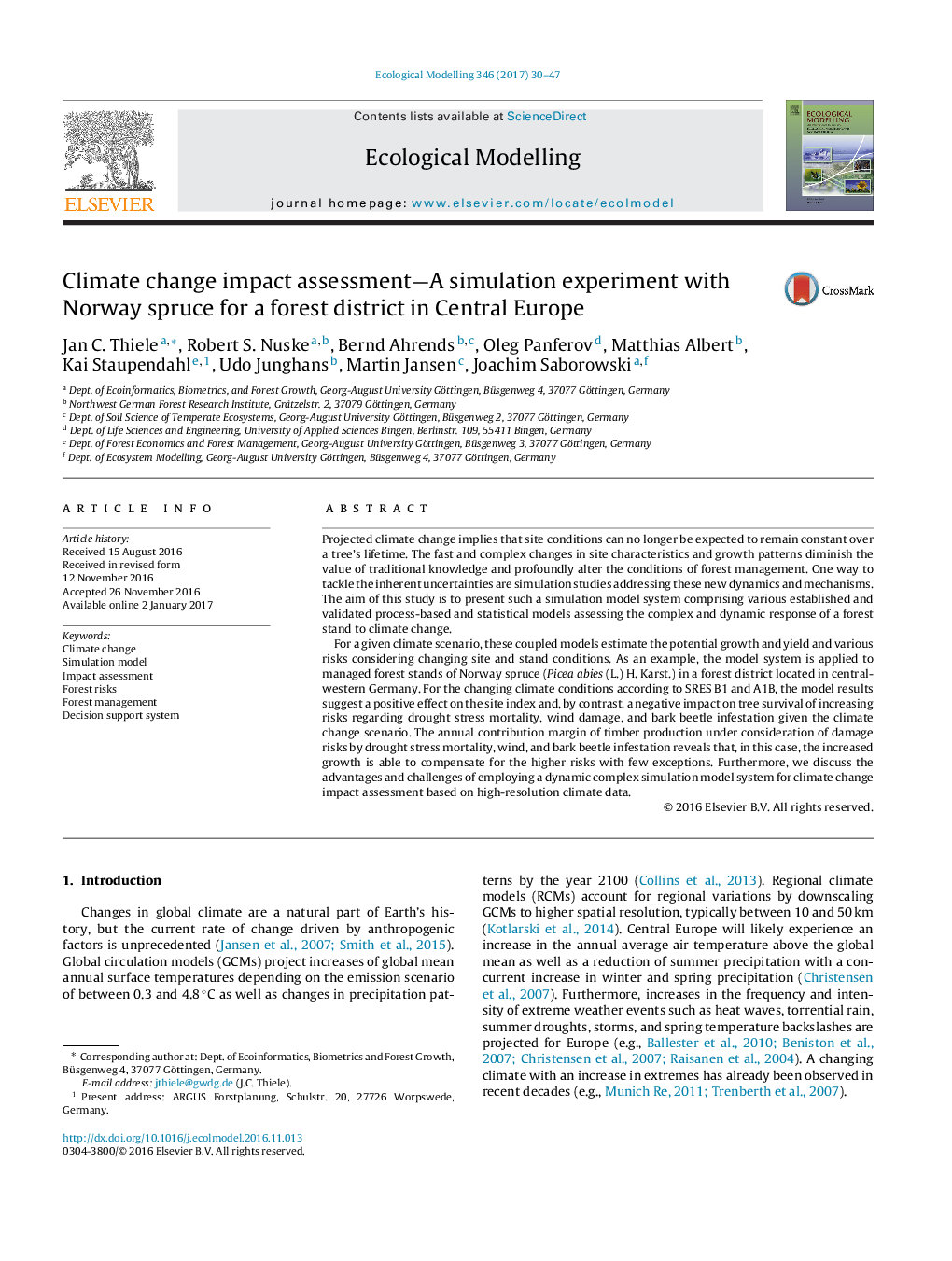| Article ID | Journal | Published Year | Pages | File Type |
|---|---|---|---|---|
| 5742343 | Ecological Modelling | 2017 | 18 Pages |
â¢A model system architecture for the assessment of climate change impacts on forests is presented.â¢Established and validated submodels are coupled and driven by climate data with high temporal resolution.â¢The potential impacts of climate change on forest growth as well as biotic and abiotic risks can be evaluated.â¢An economic valuation of impacts is provided to support forest management decisions.â¢The model system is exemplarily applied to Norway spruce in a forest district in Central Europe.
Projected climate change implies that site conditions can no longer be expected to remain constant over a tree's lifetime. The fast and complex changes in site characteristics and growth patterns diminish the value of traditional knowledge and profoundly alter the conditions of forest management. One way to tackle the inherent uncertainties are simulation studies addressing these new dynamics and mechanisms. The aim of this study is to present such a simulation model system comprising various established and validated process-based and statistical models assessing the complex and dynamic response of a forest stand to climate change.For a given climate scenario, these coupled models estimate the potential growth and yield and various risks considering changing site and stand conditions. As an example, the model system is applied to managed forest stands of Norway spruce (Picea abies (L.) H. Karst.) in a forest district located in central-western Germany. For the changing climate conditions according to SRES B1 and A1B, the model results suggest a positive effect on the site index and, by contrast, a negative impact on tree survival of increasing risks regarding drought stress mortality, wind damage, and bark beetle infestation given the climate change scenario. The annual contribution margin of timber production under consideration of damage risks by drought stress mortality, wind, and bark beetle infestation reveals that, in this case, the increased growth is able to compensate for the higher risks with few exceptions. Furthermore, we discuss the advantages and challenges of employing a dynamic complex simulation model system for climate change impact assessment based on high-resolution climate data.
